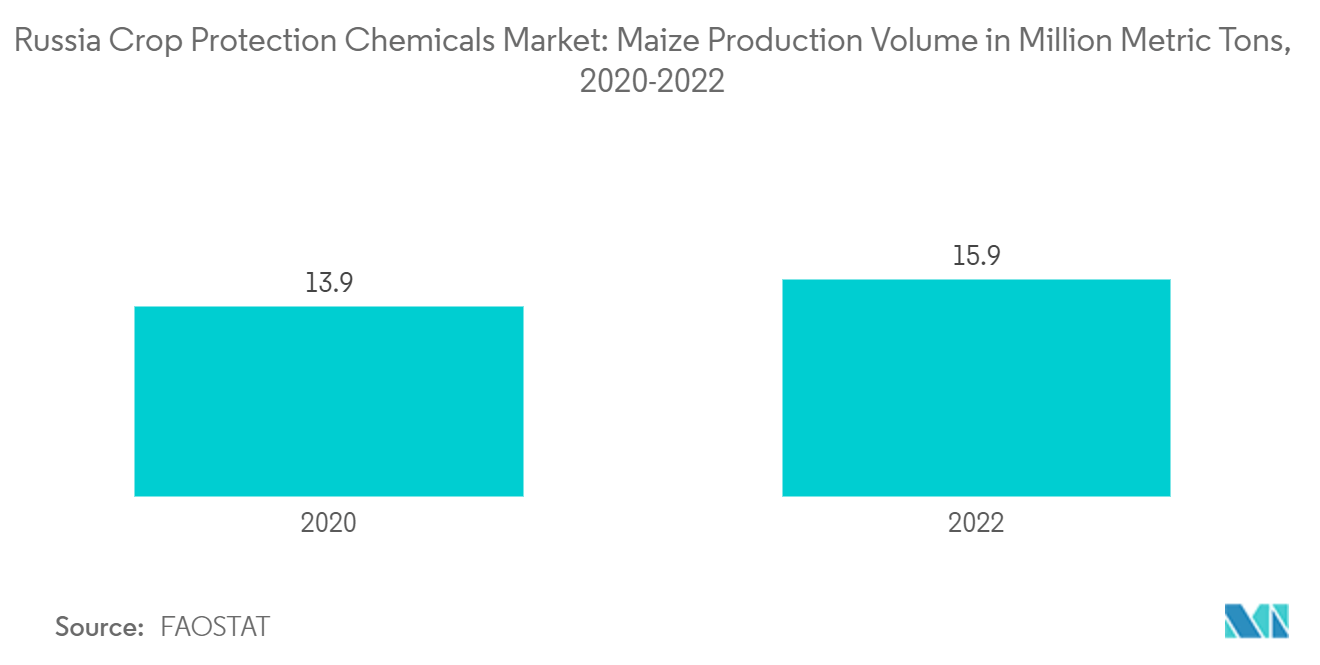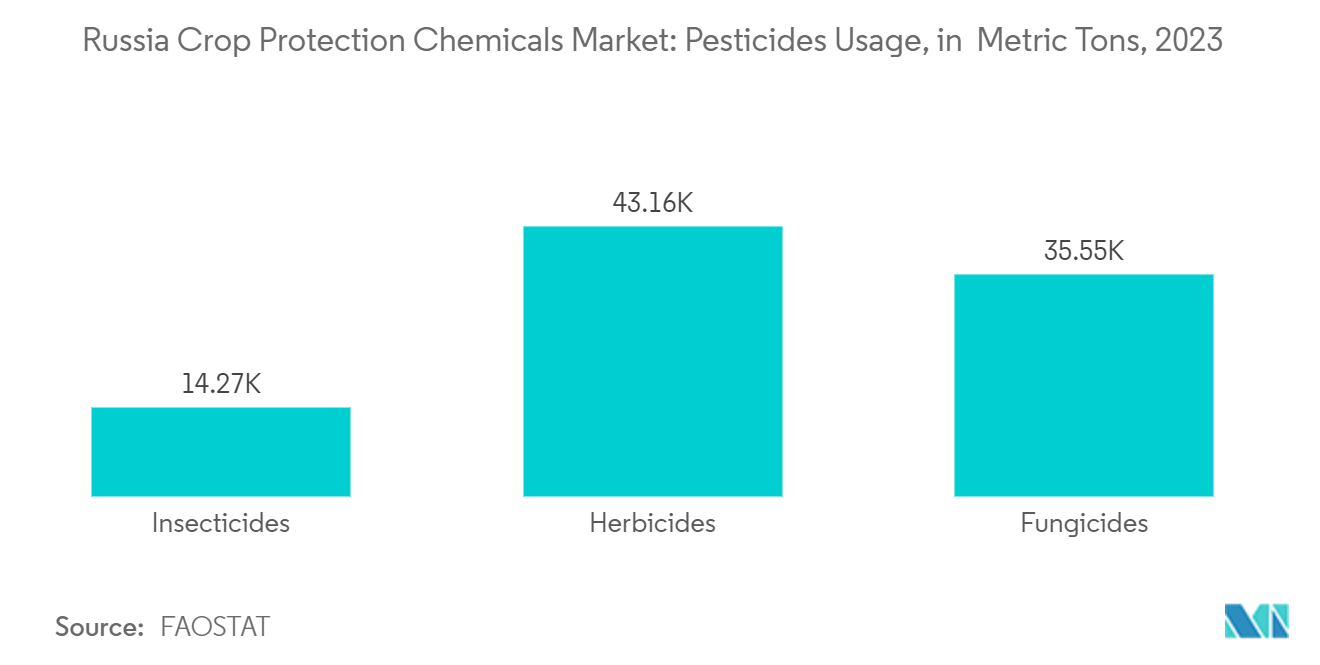Market Trends of Russia Crop Protection Chemicals Industry
Grains and Cereals is a Significant Segment by Application
Wheat, maize, barley, oats, rye, and rice are the cereals cultivated in Russia. Maize is one of the major cereal crops grown in Russia. For instance, according to FAOSTAT, the production of maize was 13.9 million metric tons in 2020, which increased to 15.9 million metric tons in 2022. Bacterial wilt, corn mosaic, bubble smut, and rust are some of the common diseases in Russian corn fields. Borers, aphids, bugs, wireworms, and caterpillars are the common insects prevalent in Russian maize crops. Similarly, many weeds cause significant yield losses in corn. Such wide damage by different pests to corn yields is anticipated to fuel the demand for crop protection chemicals in Russia.
Besides, smut, dwarf bunt, stem rust, brown leaf rust, powdery mildew, and root rot are some of the common diseases found in Russian wheat crops. Benorad, Kolosal, and Lolosal Pro are some of the fungicides used in the country to protect the wheat crop from deadly diseases. Similarly, many such diseases and pests are found in the Russian rye crop. Increasing pest infestation in cereal crops, in addition to the increase in the acreage of cereals, is causing a rise in the usage of pesticides in cereals.
Furthermore, Russia is the world's largest wheat exporter, with 20% of the global share in 2022. It accounted for an average of 10% of global wheat production over the last five years. Consequently, the increase in wheat exports has stimulated Russian farmers to invest more in wheat production, which includes crop protection chemicals. With an increase in regional exports of grains and cereals, the application of crop protection chemicals on these crops is anticipated to increase during the forecast period.

Herbicides Dominate the Market
Agriculture in Russia functions under adverse climatic and economic conditions. Despite the challenges, the country has adopted Integrated Plant Protection Management (IPPM) through the effective use of crop protection chemicals. In Russia, herbicide use has led to an increase in cereal yield on state farms. According to FAOSTAT, the usage of herbicides in the country has the highest, with 43,158.05 metric tons in 2022, followed by fungicides and insecticides. The annual loss of Russian cereal production as a result of weed infestation can be mitigated by taking appropriate measures. Methods such as the usage of herbicides to suppress weeds as become the foremost priority for improving cereal production in the country and boosting the market in the coming years.
Due to the Russia-Ukraine war, many companies such as Bayer, BASF, Corteva, FMC, and Syngenta have paused their business units in the country and stopped supplying agricultural inputs to the farmers, which led to the food crises without operations of multinational companies in the country. However, the Russian Ministry of Agriculture has managed to significantly increase the production and export of plant protection products, and manufacturers increased their pesticide exports 1.7 times from 86,800 tons to 148,900 tons between 2019 and 2021. At the same time, domestic pesticide use has also grown. The departure of multinational manufacturers accelerated the use of Russian-produced pesticides, in which the raw materials for pesticides are supplied from India and China. Due to the Russia-Ukraine war, the raw materials sector has been destroyed. Currently, the largest portion of agrochemicals used in Russia are domestically produced and account for 49% of the domestic market for plant protection products. This will anticipate the growth of the market during the forecast period.
However, due to the food crisis, the major companies started reopening businesses in the country. Now, many international crop protection chemical companies are setting up their base in the country, and along with domestic producers, the demand for herbicides is expected to increase over the next few years.


